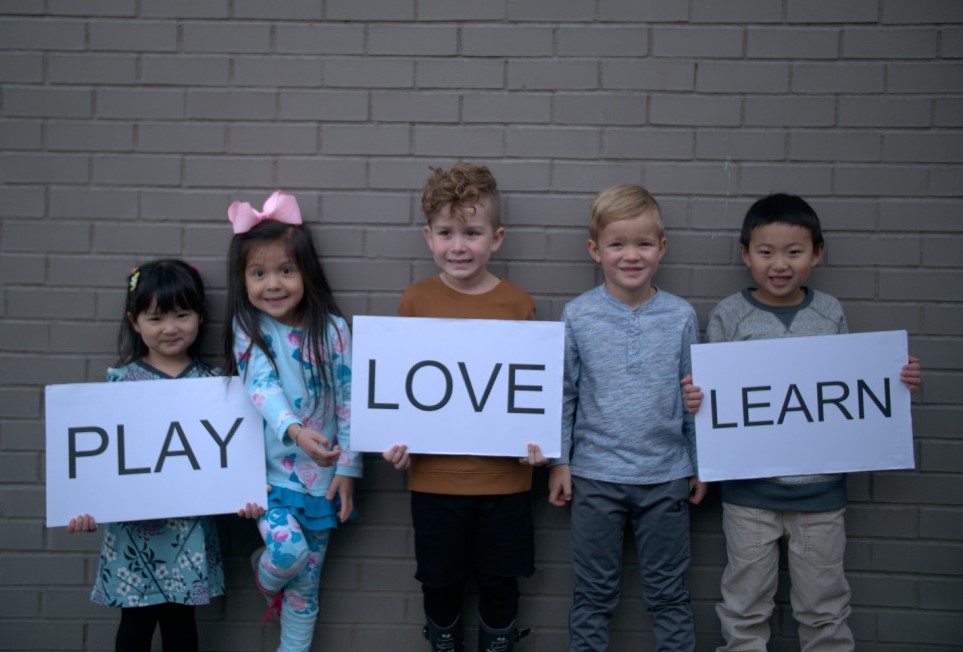
- Children spend most of their time playing and working with resources or other children. They will not be wandering aimlessly and they are not expected to sit quietly for long periods of time.
- Children have access to various activities throughout the day. Examples of this would be assorted building blocks and other construction and building materials, props for pretend play, picture books, paints and other art materials, table toys such as matching games, pegboards and puzzles.
- Teachers work with individual children, small groups, and the whole group at different times during the day.
- The classroom is attractively decorated with children’s original artwork. Children’s artwork is child directed, original, and engages the 5 senses
- Children learn numbers and the alphabet in the context of their everyday experiences. The natural world of plants and animals and meaningful activities like counting who is here today, or serving snack provide the basis for learning activities.
- Children work on projects and have long periods of time to play and explore.
- Children have an opportunity to play outside every day. Outdoor play is never sacrificed for more instructional time.
- Teachers read books to children individually or in small groups throughout the day.
- Curriculum is adapted for those who are ahead as well as those who need additional help. Teachers recognize that children’s different background and experiences mean that they do not learn the same things at the same time in the same way.
- Children and their parents should look forward to school.
